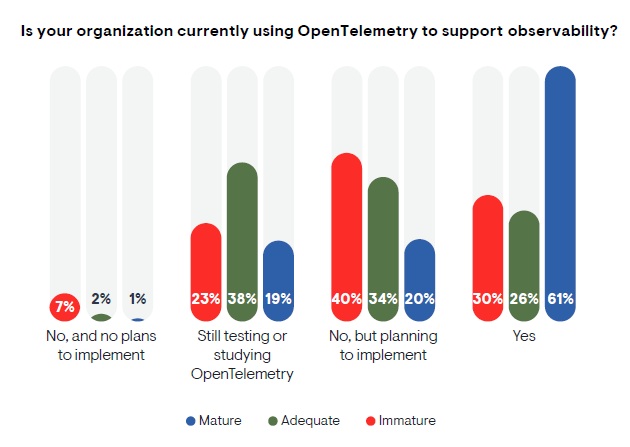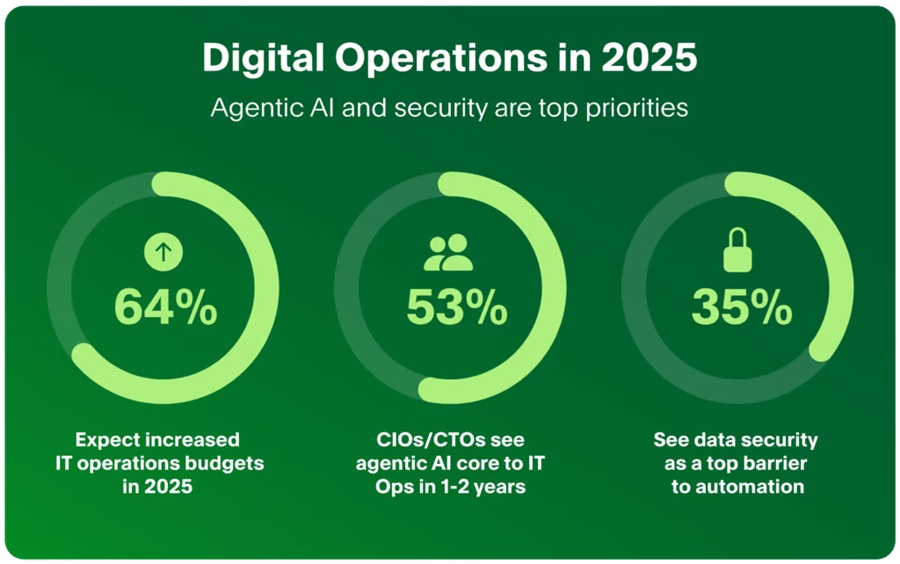Despite the frustrations, every engineer we spoke with ultimately affirmed the value and power of OpenTelemetry. The "sucks" moments are often the flip side of its greatest strengths ... Part 2 of this blog covers the powerful advantages and breakthroughs — the "OTel Rocks" moments ...
OpenTelemetry (OTel) arrived with a grand promise: a unified, vendor-neutral standard for observability data (traces, metrics, logs) that would free engineers from vendor lock-in and provide deeper insights into complex systems ... No powerful technology comes without its challenges, and OpenTelemetry is no exception. The engineers we spoke with were frank about the friction points they've encountered ...
Enterprises are turning to AI-powered software platforms to make IT management more intelligent and ensure their systems and technology meet business needs for efficiency, lowers costs and innovation, according to new research from Information Services Group ...
The power of Kubernetes lies in its ability to orchestrate containerized applications with unparalleled efficiency. Yet, this power comes at a cost: the dynamic, distributed, and ephemeral nature of its architecture creates a monitoring challenge akin to tracking a constantly shifting, interconnected network of fleeting entities ... Due to the dynamic and complex nature of Kubernetes, monitoring poses a substantial challenge for DevOps and platform engineers. Here are the primary obstacles ...
The perception of IT has undergone a remarkable transformation in recent years. What was once viewed primarily as a cost center has transformed into a pivotal force driving business innovation and market leadership ... As someone who has witnessed and helped drive this evolution, it's become clear to me that the most successful organizations share a common thread: they've mastered the art of leveraging IT advancements to achieve measurable business outcomes ...
More than half (51%) of companies are already leveraging AI agents, according to the PagerDuty Agentic AI Survey. Agentic AI adoption is poised to accelerate faster than generative AI (GenAI) while reshaping automation and decision-making across industries ...

Real privacy protection thanks to technology and processes is often portrayed as too hard and too costly to implement. So the most common strategy is to do as little as possible just to conform to formal requirements of current and incoming regulations. This is a missed opportunity ...
The expanding use of AI is driving enterprise interest in data operations (DataOps) to orchestrate data integration and processing and improve data quality and validity, according to a new report from Information Services Group (ISG) ...
While there is high enthusiasm for AI — with 92% of those surveyed in the manufacturing industry confirming AI is a top C-Suite priority and 92% agree it provides a competitive advantage — only 32% of manufacturers are fully prepared to implement AI projects now, 5% lower than the overall industry average, according to Manufacturing sector results of the Riverbed Global AI & Digital Experience Survey ...

OpenTelemetry enjoys a positive perception, with half of respondents considering OpenTelemetry mature enough for implementation today, and another 31% considering it moderately mature and useful, according to a new EMA report, Taking Observability to the Next Level: OpenTelemetry's Emerging Role in IT Performance and Reliability ... and almost everyone surveyed (98.7%) expresses support for where OpenTelemetry is heading ...

If you've been in the tech space for a while, you may be experiencing some deja vu. Though often compared to the adoption and proliferation of the internet, Generative AI (GenAI) is following in the footsteps of cloud computing ...
Lose your data and the best case scenario is, well, you know the word — but at worst, it is game over. And so World Backup Day has traditionally carried a very simple yet powerful message for businesses: Backup. Your. Data ...

A large majority (79%) believe the current service desk model will be unrecognizable within three years, and nearly as many (77%) say new technologies will render it redundant by 2027, according to The Death (and Rebirth) of the Service Desk, a report from Nexthink ...
Open source dominance continues in observability, according to the Observability Survey from Grafana Labs. A remarkable 75% of respondents are now using open source licensing for observability, with 70% reporting that their organizations use both Prometheus and OpenTelemetry in some capacity. Half of all organizations increased their investments in both technologies for the second year in a row ...
Significant improvements in operational resilience, more effective use of automation and faster time to market are driving optimism about IT spending in 2025, with a majority of leaders expecting their budgets to increase year-over-year, according to the 2025 State of Digital Operations Report from PagerDuty ...

